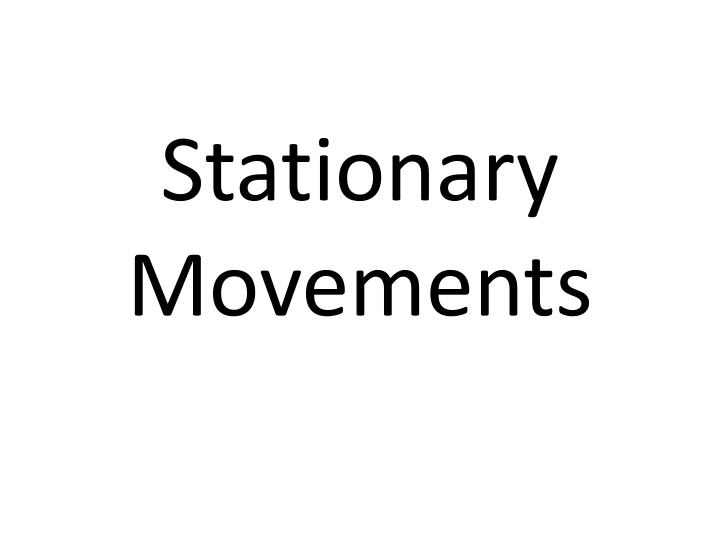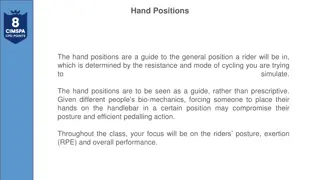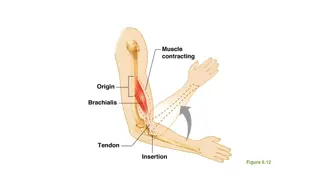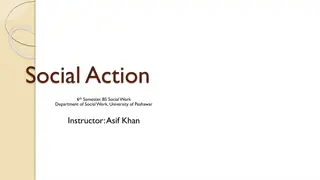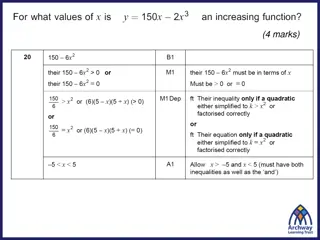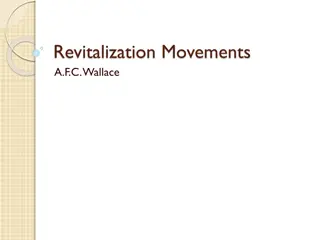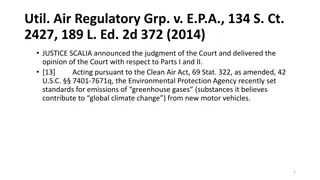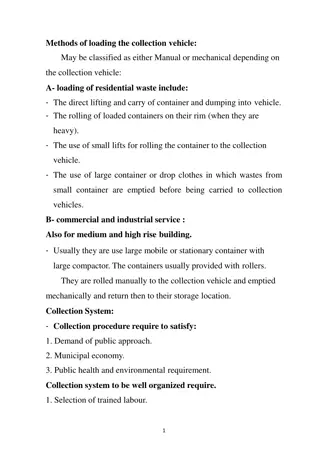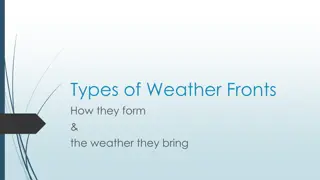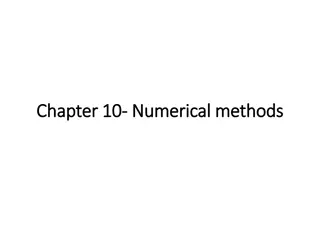Stationary Movements
Embrace the mesmerizing world of "Stationary Movements," where art and motion converge to create captivating visuals. Discover unique perspectives and innovative techniques that redefine traditional boundaries. Immerse yourself in a dynamic exploration of the interplay between stillness and movement, presented with artistic flair and creativity. Join us on a journey through a realm where imagination knows no limits and where every frame tells a story waiting to unfold.
Download Presentation

Please find below an Image/Link to download the presentation.
The content on the website is provided AS IS for your information and personal use only. It may not be sold, licensed, or shared on other websites without obtaining consent from the author.If you encounter any issues during the download, it is possible that the publisher has removed the file from their server.
You are allowed to download the files provided on this website for personal or commercial use, subject to the condition that they are used lawfully. All files are the property of their respective owners.
The content on the website is provided AS IS for your information and personal use only. It may not be sold, licensed, or shared on other websites without obtaining consent from the author.
E N D
Presentation Transcript
Stationary Movements
Position of Attention Two commands can be used to put personnel at the Position of Attention: FALL IN is used to assemble a formation or return it to its original configuration. The two-part command for Attention is used for soldiers at a rest position. Assume the Position of Attention on the command FALL IN or the command Squad (Platoon), ATTENTION. a) To assume this position, bring the heels together sharply on line, with the toes pointing out equally, forming a 45-degree angle. Rest the weight of the body evenly on the heels and balls of the feet. Keep the legs straight without locking the knees. Hold the body erect with the hips level, chest lifted and arched, and the shoulders square. b) Keep the head erect and face straight to the front with the chin drawn in so that alignment of the head and neck is vertical. c) Let the arms hang straight without stiffness. Curl the fingers so that the tips of the thumbs are alongside and touching the first joint of the forefingers. Keep the thumbs straight along the seams of the trouser leg with the first joint of the fingers touching the trousers. d) Remain silent and do not move unless otherwise directed. NOTE: This position is assumed by enlisted soldiers when addressing officers, or when officers are addressing officers of superior rank.
Rest Positions at the Halt Any of the positions of rest may be commanded and executed from the Position of Attention. a) Parade Rest. Parade Rest is commanded only from the Position of Attention. The command for this movement is Parade, REST. 1) On the command of execution REST, move the left foot about 10 inches to the left of the right foot. Keep the legs straight without locking the knees, resting the weight of the body equally on the heels and balls of the feet. 2) Simultaneously, place the hands at the small of the back and centered on the belt. Keep the fingers of both hands extended and joined, interlocking the thumbs so that the palm of the right hand is outward. 3) Keep the head and eyes as in the Position of Attention. Remain silent and do not move unless otherwise directed. Stand at Ease, At Ease, and Rest may be executed from this position. NOTE: Enlisted soldiers assume this position when addressing all noncommissioned officers or when noncommissioned officers address noncommissioned officers of superior rank. b) Stand At Ease. The command for this movement is Stand at, EASE. On the command of execution EASE, execute Parade Rest, but turn the head and eyes directly toward the person in charge of the formation. At Ease or Rest may be executed from this position. c) At Ease. The command for this movement is AT EASE. On the command AT EASE, the soldier may move; however, he must remain standing and silent with his right foot in place. The soldier may relax his arms with the thumbs interlaced.Rest may be executed from this position. d) Rest. The command for this movement is REST. On the command REST, the soldier may move, talk, smoke (not advised for cadets), or drink unless otherwise directed. He must remain standing with is right foot in place. AT EASE must be executed from this position to allow soldiers to secure canteens, other equipment, and so forth. NOTE: On the preparatory command for Attention, immediately assume Parade Rest when at the position of Stand at Ease, At Ease, or Rest. If, for some reason, a subordinate element is already at attention, the members of the element remain so and do not execute parade rest on the preparatory command, nor does the subordinate leader give a supplementary command.
Facing at the Halt Five facing movements can be executed from the Position of Attention: Left (Right), FACE, Half Left (Half Right), FACE, and About, FACE. NOTE: Half Left (Half Right), FACE should only be used in situations when a 90-degree facing movement would not face an element in the desired direction (for example, for a stationary element to face the direction of the flag to render honors [reveille or retreat]). a) Facing to the Flank is a two-count movement. The command is Left (Right), FACE. 1) On the command of execution FACE, slightly raise the right heel and left toe, and turn 90 degrees to the left on the left heel, assisted by a slight pressure on the ball of the right foot. Keep the left leg straight without stiffness and allow the right leg to bend naturally. 2) On count two, place the right foot beside the left foot, resuming the Position of Attention. Arms remain at the sides, as in the Position of Attention, throughout this movement. b) Facing to the Rear is a two-count movement. The command is About, FACE. 1) On the command of execution FACE, move the toe of the right foot to a point touching the marching surface about half the length of the foot to the rear and slightly to the left of the left heel. Rest most of the weight of the body on the heel of the left foot and allow the right knee to bend naturally. 2) On count two, turn to the right 180 degrees on the left heel and ball of the right foot, resuming the Position of Attention. Arms remain at the sides, as in the Position of Attention throughout this movement. NOTE: Throughout these movements, the remainder of the body remains as in the Position of Attention.
Hand Salute The Hand Salute is a one-count movement. The command is Present, ARMS. The Hand Salute may be executed while marching. When marching, only the soldier in charge of the formation salutes and acknowledges salutes. When double-timing, an individual soldier must come to Quick Time before saluting. a) When wearing head gear with a visor (with or without glasses), on the command of execution ARMS, raise the right hand sharply, fingers and thumb extended and joined, palm facing down, and place the tip of the right forefinger on the rim of the visor slightly to the right of the right eye. The outer edge of the hand is barely canted downward so that neither the back of the hand nor the palm is clearly visible from the front. The hand and wrist are straight, the elbow inclined slightly forward, and the upper arm horizontal. b) When wearing headgear without a visor (or uncovered) and not wearing glasses, execute the Hand Salute in the same manner as previously described, except touch the tip of the right forefinger to the forehead near and slightly to the right of the right eyebrow. c) When wearing headgear without a visor (or uncovered) and wearing glasses, execute the Hand Salute in the same manner as previously described, except touch the tip of the right forefinger to that point on the glasses where the temple piece of the frame meets the right edge of the right brow. d) Order Arms from the Hand Salute is a one-count movement. The command is Order, ARMS. On the command of execution ARMS, return the hand sharply to the side, resuming the Position of Attention. e) When reporting or rendering courtesy to an individual, turn the head and eyes toward the person addressed and simultaneously salute. In this situation, the actions are executed without command. The Salute is initiated by the subordinate at the appropriate time (six paces) and terminated upon acknowledgment.
Steps and Marching
Basic Marching Information This basic marching information pertains to all marching movements. a) All marching movements executed from the Halt are initiated from the Position of Attention. b) Except for Route Step March and At Ease March, all marching movements are executed while marching at Attention. Marching at Attention is the combination of the Position of Attention and the procedures for the prescribed step executed simultaneously. c) When executed from the Halt, all steps except Right Step begin with the left foot. d) For short-distance marching movements, the commander may designate the number of steps forward, backward, or sideward by giving the appropriate command: One step to the right (left), MARCH; or, Two steps backward (forward), MARCH. On the command of execution MARCH, step off with the appropriate foot, and halt automatically after completing the number of steps designated. Unless otherwise specified, when directed to execute steps forward, the steps will be 30-inch steps. e) All marching movements are executed in the cadence of Quick Time (120 steps per minute), except the 30-inch step, which may be executed in the cadence of 180 steps per minute on the command Double Time, MARCH. f) A step is the prescribed distance from one heel to the other heel of a marching soldier. g) All 15-inch steps are executed for a short distance only.
The 30-Inch Step To march with a 30-inch step from the Halt, the command is Forward, MARCH. a) On the preparatory command Forward, shift the weight of the body to the right foot without noticeable movement. On the command of execution MARCH, step forward 30 inches with the left foot and continue marching with 30-inch steps, keeping the head and eyes fixed to the front. The arms swing in a natural motion, without exaggeration and without bending at the elbows, approximately 9 inches straight to the front and 6 inches straight to the rear of the trouser seams. Keep the fingers curled as in the Position of Attention so that the fingers just clear the trousers. b) To Halt while marching, the command Squad (Platoon), HALT is given. The preparatory command Squad (Platoon) is given as either foot strikes the marching surface as long as the command of execution HALT is given the next time that same foot strikes the marching surface. The Halt is executed in two counts. After HALT is commanded, execute the additional step required after the command of execution and then bring the trail foot alongside the lead foot, assuming the Position of Attention and terminating the movement.
Change Step This movement is executed automatically whenever a soldier finds himself out of step with all other members of the formation. It is only executed while marching forward with a 30-inch step. To change step, the command Change Step, MARCH is given as the right foot strikes the marching surface. On the command of execution MARCH, take one more step with the left foot, then in one count place the right toe near the heel of the left foot and step off again with the left foot. The arms swing naturally. This movement is executed automatically whenever a soldier finds himself out of step with all other members of the formation.
Marching to the Rear This movement is used to change the direction of a marching element 180 degrees in a uniform manner. It is only executed while marching forward with a 30-inch step. To March to the Rear, the command Rear, MARCH is given as the right foot strikes the marching surface. On the command of execution MARCH, take one more step with the left foot, pivot 180 degrees to the right on the balls of both feet, and step off in the new direction taking a 30-inch step with the trail foot. Do not allow the arms to swing outward while turning.
The 15-inch Step, Forward/Half Step Use the following procedures to execute the 15-inch step, forward/half step. a) To march with a 15-inch step from the Halt, the command is Half Step, MARCH. On the preparatory command Half step, shift the weight of the body to the right foot without noticeable movement. On the command of execution MARCH, step forward 15 inches with the left foot and continue marching with 15-inch steps. The arms swing as in marching with a 30-inch step. b) To alter the march to a 15-inch step while marching with a 30-inch step, the command is Half Step, MARCH. This command may be given as either foot strikes the marching surface. On the command of execution MARCH, take one more 30-inch step and then begin marching with a 15-inch step. The arms swing as in marching with a 30-inch step. c) To resume marching with a 30-inch step, the command Forward, MARCH is given as either foot strikes the marching surface. On the command of execution MARCH, take one more 15-inch step. The arms swing as in marching with a 30-inch step. d) The Halt while marching at the Half Step is executed in two counts, the same as the Halt from the 30-inch step. e) While marching at the Half Step, the only commands that may be given are: Mark Time, MARCH; Forward, MARCH; Normal Interval, MARCH; and HALT.
Marching in Place To march in place, use the following procedures. a) To march in place, the command Mark Time, MARCH is given as either foot strikes the marching surface and only while marching with a 30-inch or 15-inch step forward. On the command of execution MARCH, take one more step, bring the trailing foot alongside the leading foot, and begin to march in place. Raise each foot (alternately) 2 inches off the marching surface; the arms swing naturally, as in marching with a 30- inch step forward. NOTE: While marking time in formation, the soldier adjusts position to ensure proper alignment and cover. The proper distance between soldiers while marching is one arm s length plus 6 inches (approximately 40 inches). b) To resume marching with a 30-inch step, the command Forward, MARCH is given as either foot strikes the marching surface. On the command of execution MARCH, take one more step in place and then step off with a 30-inch step. c) The Halt from Mark Time is executed in two counts, basically the same as the Halt from the 30-inch step.
The 15-Inch Step, Right/Left To march with a 15-inch Step Right (Left), use the following procedures: a) To march with a 15-inch Step Right (Left), the command is Right (Left) Step, MARCH. The command is given only while at the halt. On the preparatory command of Right (Left) Step, shift the weight of the body without noticeable movement onto the left (right) foot. On the command of execution MARCH, bend the right knee slightly and raise the right foot only high enough to allow freedom of movement. Place the right foot 15 inches to the right of the left foot, and then move the left foot (keeping the left leg straight) alongside the right foot as in the Position of Attention. Continue this movement, keeping the arms at the sides as in the Position of Attention. b) To Halt when executing Right or Left Step, the command is Squad (Platoon), HALT. This movement is executed in two counts. The preparatory command is given when the heels are together; the command of execution HALT is given the next time the heels are together. On the command of execution HALT, take one more step with the lead foot and then place the trailing foot alongside the lead foot, resuming the Position of Attention.
The 15-Inch Step, Backward To march backward using the 15-inch step, use the following procedures: a) To march with a 15-Inch Step Backward, the command is Backward, MARCH. The command is given only while at the Halt. On the preparatory command Backward, shift the weight of the body without noticeable movement onto the right foot. On the command of execution MARCH, take a 15- inch step backward with the left foot and continue marching backward with 15-inch steps. The arms swing naturally. b) The Halt from Backward March is executed in two counts, basically the same as the Halt from the 30- inch step.
The 30-Inch Step, Double Time To Double-Time using the 30-inch step, use the following procedures: a) To march in the cadence of 180 steps per minute with a 30-inch step, the command is Double Time, MARCH. It may be commanded while at the Halt or while marching at Quick Time with a 30- inch step. b) When at the Halt and the preparatory command Double Time is given, shift the weight of the body to the right foot without noticeable movement. On the command of execution MARCH, raise the forearms to a horizontal position, with the fingers and thumbs closed, knuckles out, and simultaneously step off with the left foot. Continue to march with 30-inch steps at the cadence of Double Time. The arms swing naturally to the front and rear with the forearms kept horizontal. (When armed, soldiers will come to Port Arms on receiving the preparatory command of Double Time.) Guides, when at Sling Arms, will Double-Time with their weapons at Sling Arms upon receiving the directive GUIDE ON LINE. c) When marching with a 30-inch step in the cadence of Quick Time, the command Double Time, MARCH is given as either foot strikes the marching surface. On the command of execution MARCH, take one more 30-inch step at Quick Time, and step off with the trailing foot, double-timing as previously described. d) To resume marching with a 30-inch step at Quick Time, the command Quick time, MARCH is given as either foot strikes the marching surface. On the command of execution MARCH, take two more 30-inch steps at Double Time, lower the arms to the sides, and resume marching with a 30-inch step at Quick Time. NOTE: Quick Time, Column Half Left (Right), and Column Left (Right) are the only movements that can be executed while double-timing. Armed troops must be at Port Arms before the command Double Time, MARCH is given.
